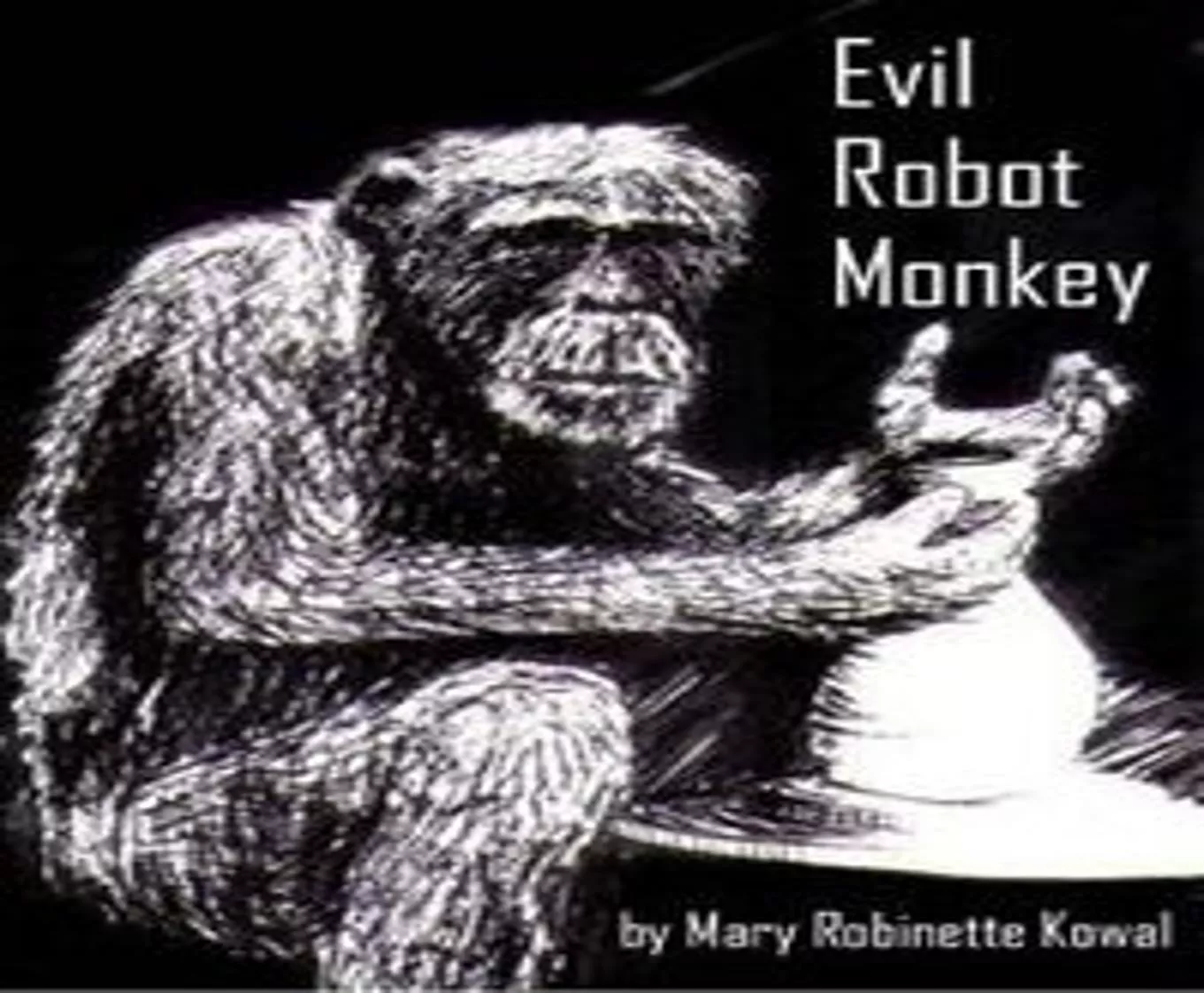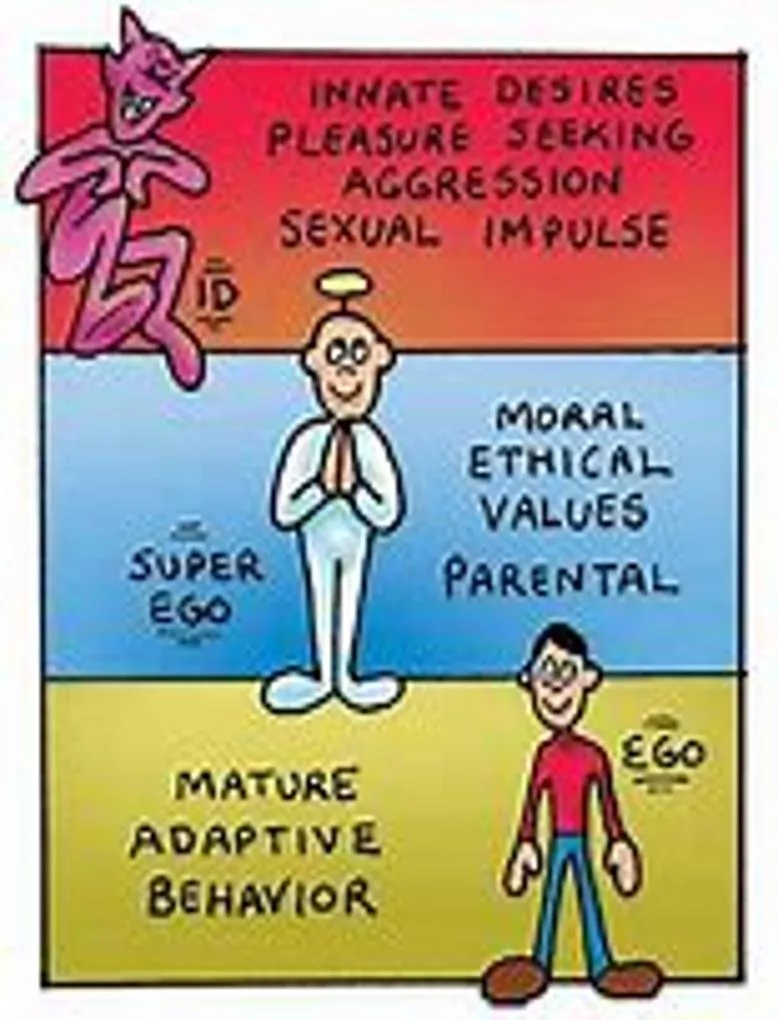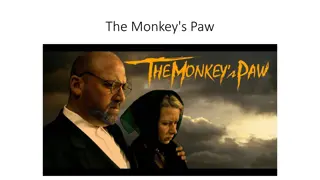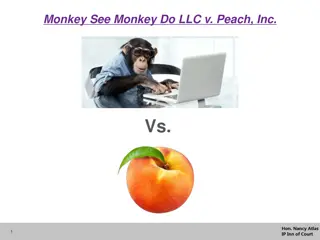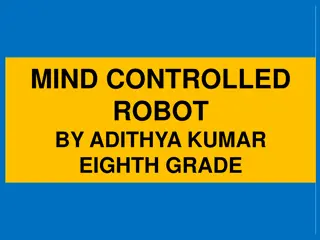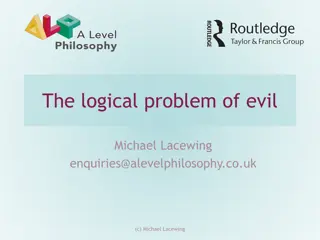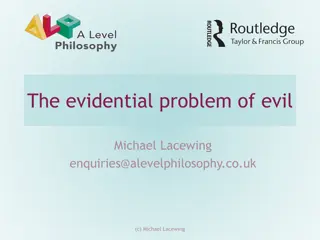Psychological Evolution in "Evil Robot Monkey" Presentation
Explore the psychological evolution of Sly, a chimpanzee, in Mary Robinette Kowal's short story "Evil Robot Monkey." Sly's journey transitions from the Id to the Superego and eventually to the Ego, showcasing innate instincts, reactions to external stimuli, and the development of personal identity.
Download Presentation

Please find below an Image/Link to download the presentation.
The content on the website is provided AS IS for your information and personal use only. It may not be sold, licensed, or shared on other websites without obtaining consent from the author. Download presentation by click this link. If you encounter any issues during the download, it is possible that the publisher has removed the file from their server.
E N D
Presentation Transcript
Pecha Kucha presentation Evil Robot Monkey By Mary Robinette Kowal
Hello my name is Rhys, In this presentation, I will be discussing the arc or transition of Sly s psychological state from Id, to Superego, to Ego in the short story I read, Evil Robot Monkey .
At the beginning of this story, a chimpanzee, Sly, is in a contented psychological state due to his enjoyment of making a vase out of clay on a pottery wheel.
Slys happiness is interrupted by humans banging on the plexiglass wall of his zoo cage. This instantly turns his psychological state towards the Id , the part of the mind in which innate instinctive impulses and primary processes manifest.
Id behavior of anger emerges when Sly is disturbed by the kids and teacher which drives him to throw clay: He spun and hurled it at the picture window like feces .
Id behavior of revenge is described by: so Sly grabbed himself and showed her what he would do to her if she came in his pen (Kowal, page 2).
Other examples of id manifestation are: Sly bared his teeth, knowing these people would take it as a grin, but he meant it as a threat
With the statement, He just wanted to make pottery , Sly s psychological transition to the ego state is evident.
The ego is the part of the mind that mediates between the conscious and the unconscious and is responsible for reality testing and a sense of personal identity.
Slys sense of personal identity is very evident in his comment to Vern, You should have told them that I was not an animal and I m not like the other chimps (Kowal, page 3).
The superego is the ethical component of the personality and provides the moral standards by which the ego operates. It is the part of a person s mind that acts as a self- critical conscience, reflecting social standards learned from parents and teachers. .
In Slys discussion with Vern, it is evident that there is a conflict between the drive of the id and the constraint of the social superego. This is underscored when Kowal describes Sly s anger (id) as It would be so easy to reach out and snap his neck
Even though Sly is angry with Vern for imposing the punishment of taking his clay away, Sly uses superego traits to reason that Vern was not the person to take his anger out on.
Slys use of superego is further evident when he acknowledges that Vern is the only person who understood Sly as noted by the statement He seemed to understand the hellish limbo where Sly lived-too smart to be with other chimps, but too much of an animal to be with humans (Kowal, page 3).
Slys development from id to superego is when Sly is told by Vern that Sly s clay would be taken away. Sly restrains the id, which is anger, but uses superego and ego to consciously decide to not get angry.
Slys transition from id to ego is described as: Rage threatened to blind him, but he held on, clutching the wheel (page 3).
The war between the id and superego is further noted by If he lost it with Vern-rational thought danced out of his reach (page 3).
Kowals symbolism of the id vying with the superego is highlighted in the following passage: Panting, he spun the wheel, trying to push his anger into the clay (page 3).
In this story, the clay is symbolic of the id and the vase is symbolic of the ego
Slys psychological struggle to overcome the instincts and drive of the id to reach personal identity (ego) is evident by: He waited until the door closed, then loped over and scooped the clay up. It was not much, but it was enough for now. Sly sat down at his wheel and began to turn (page 3).


